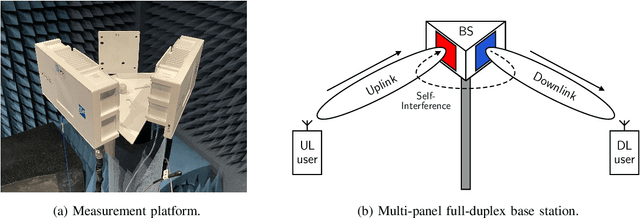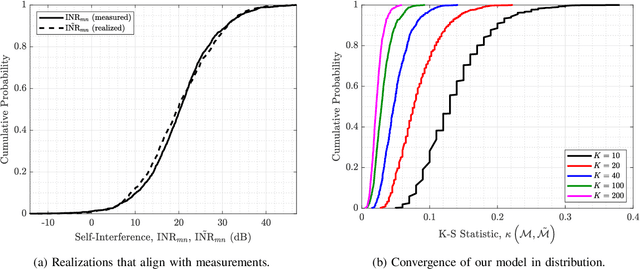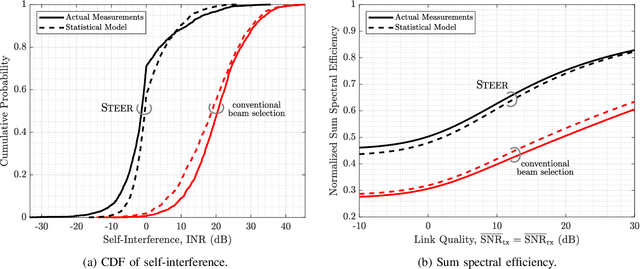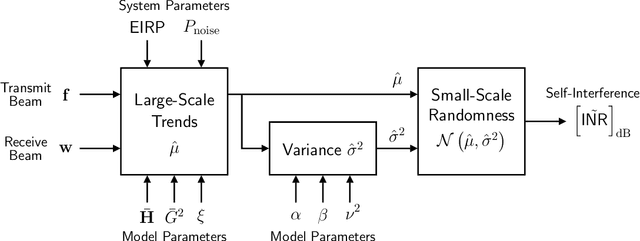Spatial and Statistical Modeling of Multi-Panel Millimeter Wave Self-Interference
Paper and Code
Oct 14, 2022



Characterizing self-interference is essential to the design and evaluation of in-band full-duplex communication systems. Until now, little has been understood about this coupling in full-duplex systems operating at millimeter wave (mmWave) frequencies, and it has been shown that highly-idealized models proposed for such do not align with practice. This work presents the first spatial and statistical model of multi-panel mmWave self-interference backed by measurements, enabling engineers to draw realizations that exhibit the large-scale and small-scale spatial characteristics observed in our nearly 6.5 million measurements. Core to our model is its use of system and model parameters having real-world meaning, which facilitates the extension of our model to systems beyond our own phased array platform through proper parameterization. We demonstrate this by collecting nearly 13 million additional measurements to show that our model can generalize to two other system configurations. We assess our model by comparing it against actual measurements to confirm its ability to align spatially and in distribution with real-world self-interference. In addition, using both measurements and our model of self-interference, we evaluate an existing beamforming-based full-duplex mmWave solution to illustrate that our model can be reliably used to design new solutions and validate the performance improvements they may offer.
 Add to Chrome
Add to Chrome Add to Firefox
Add to Firefox Add to Edge
Add to Edge